Old Browser
This page has been recently translated and is available in French now.
Looks like you're visiting us from {countryName}.
Would you like to stay on the current country site or be switched to your country?


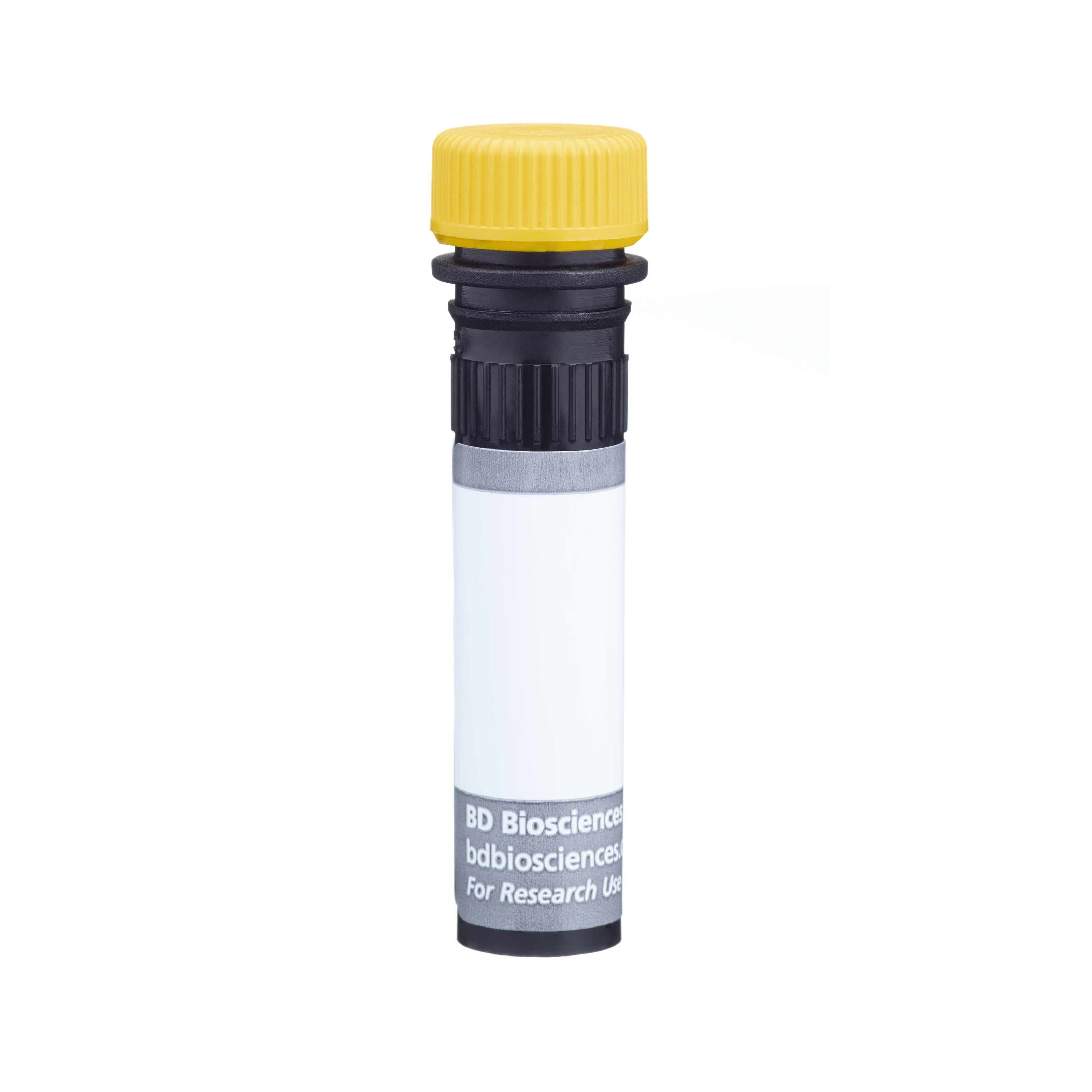

Multicolor flow cytometric analysis of CD39 (ENTPD1) expression on Human peripheral blood CD4+CD25+CD127low T cells. Human whole blood was stained with FITC Mouse Anti-Human CD4 (Cat. No. 561842/555346), BD Horizon™ BV421 Mouse Anti-Human CD25 (Cat. No. 562442/562443), PE Anti-Human CD127 (Cat No. 557938/561028) antibodies, and with either BD Horizon™ BUV661 Mouse IgG2b, κ Isotype Control (Cat. No. 612976; dashed line histogram) or BD Horizon™ BUV661 Mouse Anti-Human CD39 (ENTPD1) antibody (Cat. No. 569788; solid line histogram) (Left Plot) at 0.5 µg/test. Erythrocytes were lysed with BD FACS™ Lysing Solution (Cat. No. 349202). The fluorescence histogram showing CD39 (ENTPD1) expression (or Ig Isotype control staining) was derived from CD4+CD25+CD127low gated events (i.e., cells with a Regulatory T cell immunophenotype; Right Plot) with the forward and side light-scatter characteristics of intact lymphocytes. Flow cytometry and data analysis were performed using a BD LSRFortessa™ X-20 Cell Analyzer System and FlowJo™ Software. Data shown on this Technical Data Sheet are not lot specific.


BD Horizon™ BUV661 Mouse Anti-Human CD39 (ENTPD1)

Regulatory Status Legend
Any use of products other than the permitted use without the express written authorization of Becton, Dickinson and Company is strictly prohibited.
Preparation And Storage
Recommended Assay Procedures
BD® CompBeads can be used as surrogates to assess fluorescence spillover (compensation). When fluorochrome conjugated antibodies are bound to BD® CompBeads, they have spectral properties very similar to cells. However, for some fluorochromes there can be small differences in spectral emissions compared to cells, resulting in spillover values that differ when compared to biological controls. It is strongly recommended that when using a reagent for the first time, users compare the spillover on cells and BD® CompBeads to ensure that BD® CompBeads are appropriate for your specific cellular application.
For optimal and reproducible results, BD Horizon Brilliant Stain Buffer should be used anytime BD Horizon Brilliant dyes are used in a multicolor flow cytometry panel. Fluorescent dye interactions may cause staining artifacts which may affect data interpretation. The BD Horizon Brilliant Stain Buffer was designed to minimize these interactions. When BD Horizon Brilliant Stain Buffer is used in the multicolor panel, it should also be used in the corresponding compensation controls for all dyes to achieve the most accurate compensation. For the most accurate compensation, compensation controls created with either cells or beads should be exposed to BD Horizon Brilliant Stain Buffer for the same length of time as the corresponding multicolor panel. More information can be found in the Technical Data Sheet of the BD Horizon Brilliant Stain Buffer (Cat. No. 563794/566349) or the BD Horizon Brilliant Stain Buffer Plus (Cat. No. 566385).
Note: When using high concentrations of antibody, background binding of this dye to erythroid cell subsets (mature erythrocytes and precursors) has been observed. For researchers studying these cell populations, or in cases where light scatter gating does not adequately exclude these cells from the analysis, this background may be an important factor to consider when selecting reagents for panel(s).
Product Notices
- Please refer to www.bdbiosciences.com/us/s/resources for technical protocols.
- Since applications vary, each investigator should titrate the reagent to obtain optimal results.
- An isotype control should be used at the same concentration as the antibody of interest.
- Caution: Sodium azide yields highly toxic hydrazoic acid under acidic conditions. Dilute azide compounds in running water before discarding to avoid accumulation of potentially explosive deposits in plumbing.
- For fluorochrome spectra and suitable instrument settings, please refer to our Multicolor Flow Cytometry web page at www.bdbiosciences.com/colors.
- Human donor specific background has been observed in relation to the presence of anti-polyethylene glycol (PEG) antibodies, developed as a result of certain vaccines containing PEG, including some COVID-19 vaccines. We recommend use of BD Horizon Brilliant™ Stain Buffer in your experiments to help mitigate potential background. For more information visit https://www.bdbiosciences.com/en-us/support/product-notices.
- Please refer to http://regdocs.bd.com to access safety data sheets (SDS).
- For U.S. patents that may apply, see bd.com/patents.
Companion Products

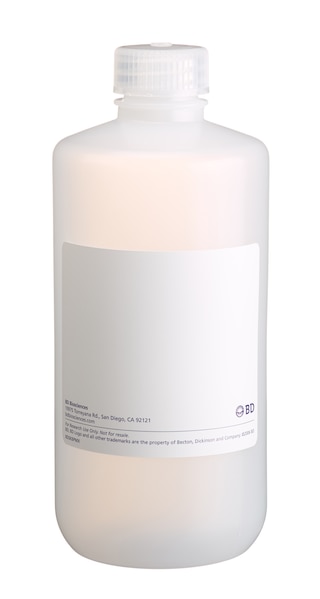

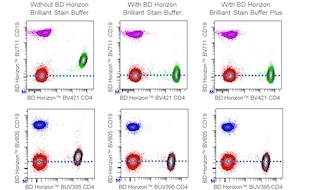
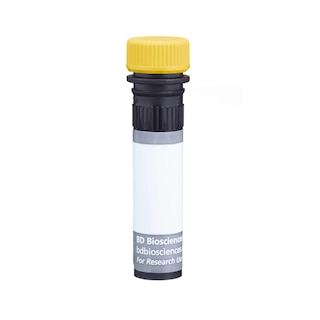
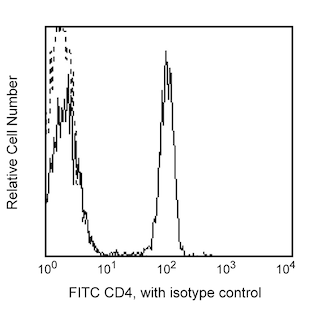
The TU66 monoclonal antibody specifically recognizes human CD39 which is also known as Ectonucleoside triphosphate diphosphohydrolase 1 (NTPDase 1), Ecto-ATP diphosphohydrolase 1 (Ecto-ATPDase 1), or Ecto-apyrase. CD39 is an integral membrane glycoprotein with two transmembrane domains, N- and C-terminal cytoplasmic tails, and an extracellular region that contains the NTPDase 1 active site. CD39 is encoded by ENTPD1 which belongs to the ectoenzyme family. CD39 is variably expressed on activated T cells and B cells, regulatory T cells (Treg), dendritic cells, Langerhans cells, NK cells, monocytes, macrophages, endothelial cells, and granulocytes. CD39 acts on extracellular nucleoside triphosphates and diphosphates including ATP and ADP that are hydrolyzed into AMP. Through cell surface CD73 (Ecto-5'-nucleotidase), regulatory T cells can act on extracellular AMP to generate immunosuppressive adenosine. CD39 is involved in the control of the extracellular pool of phosphorylated nucleosides, the suppression of inflammation and immunity, and the regulation of platelet activation.
Development References (5)
-
Borsellino G, Kleinewietfeld M, Di Mitri D, et al. Expression of ectonucleotidase CD39 by Foxp3+ Treg cells: hydrolysis of extracellular ATP and immune suppression.. Blood. 2007. (Biology). View Reference
-
Duensing S, Kirshner H, Atzpodien J. CD39 as a novel marker of in vivo immune activation. Blood. 1994; 83(12):3826-3827. (Biology). View Reference
-
Knapp W. W. Knapp .. et al., ed. Leucocyte typing IV : white cell differentiation antigens. Oxford New York: Oxford University Press; 1989:1-1182.
-
Stein H, Lennert K, Mason DY, Liangru S, Ziegler A. Immature sinus histiocytes. Their identification as a novel B-cell population. Am J Pathol. 1984; 117(1):44-52. (Clone-specific: Immunohistochemistry). View Reference
-
Ziegler A, Uchanska-Ziegler B, Stein H, Hadam M. A mAb A54 (Tü 66) recognizing a novel avtivation antigen. In: Knapp W. W. Knapp .. et al., ed. Leucocyte typing IV : white cell differentiation antigens. Oxford New York: Oxford University Press; 1989:467-468.
Please refer to Support Documents for Quality Certificates
Global - Refer to manufacturer's instructions for use and related User Manuals and Technical data sheets before using this products as described
Comparisons, where applicable, are made against older BD Technology, manual methods or are general performance claims. Comparisons are not made against non-BD technologies, unless otherwise noted.
For Research Use Only. Not for use in diagnostic or therapeutic procedures.
Report a Site Issue
This form is intended to help us improve our website experience. For other support, please visit our Contact Us page.